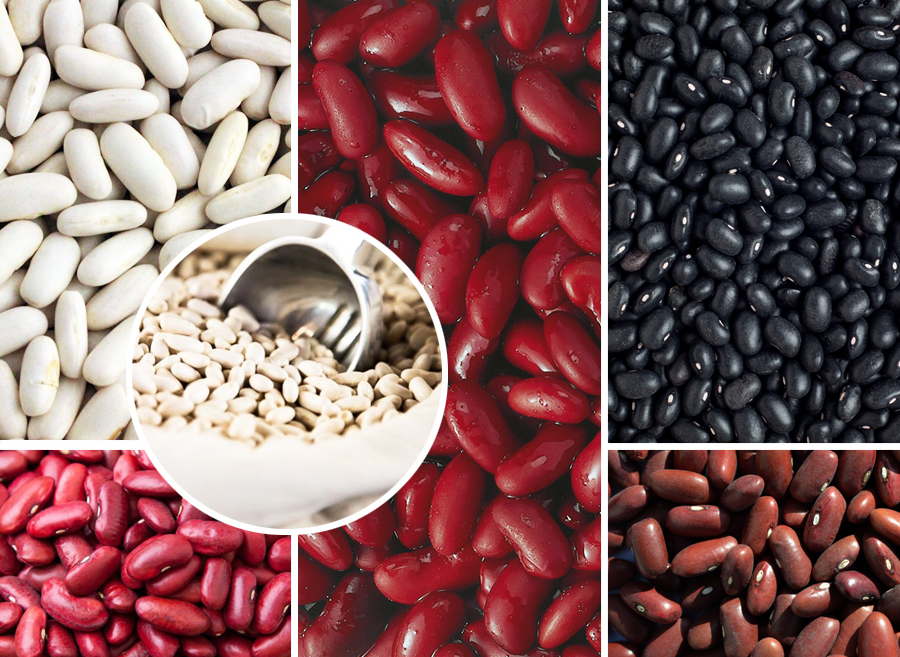June 22, 2020
More beans were seeded this year than last, but adverse weather impacted yields and grain size.


Growers in Argentina seeded their bean crops with high expectations this planting season. Attractive prices saw the bean area expand by as much as 20-25% in the case of alubia beans. But then a dry spell set in from mid-February to mid-March, bringing planting activity to a halt. As weeks went by without rain, the bean sector resigned itself to the certainty of below-average yields.
Now, with an estimated 30-40% of the bean crop harvested, CLERA President Sergio Raffaeli says the impact of the dry weather was even worse than feared.
“The early signs point to a 30% decrease in yields compared to last year, and significantly smaller caliber sizes across all bean classes,” says Raffaeli. “We planted more hectares, but we’ll end up with a smaller crop.”
It also didn’t help that a frost hit the crop on May 25th, resulting in additional losses. The southern areas, where the vast majority of the black bean crop is grown, was especially hard hit. Oscar Vizgarra, coordinator of the dry legume project at the Obispo Agro-industrial Experimental Station in Tucuman Province, reports temperatures fell to -4 degrees Celsius over an eight-hour period. In the northern area, where alubia beans predominate, Raffaeli says the impact of the frost varied. Resulting crop damage will become evident as the harvest progresses, but in general he concurs with area grower Mario Gerala, who reports the frost was not as severe in the northern growing area as it was in the south.
Raffaeli likens this year’s crop to the 2018 crop, when hot, dry weather also resulted in below average yields and smaller caliber sizes. CLERA estimates the following gross raw material production volumes for 2020:
Argentina’s dry bean growing area is in the northwestern corner of the country and can be divided in two -- the area south of the town of Güemes in the province of Salta, where black bean production predominates, and the area to the north of Güemes, where most of the alubia bean crop is produced.
The bean harvest in Argentina starts in the southernmost parts of the growing area (the provinces of Tucuman and Santiago del Estero) and rolls northward through southern Salta, into the province of Jujuy, and up through northeastern Salta to the border with Bolivia.
As of this writing, most of the black and colored bean crops have been harvested. The alubia bean harvest, however, is in the early stages.
Southern Growing Area: Black Bean Country
Vizgarra reports that the weather at harvest has been generally good, with sunny, cool and dry conditions. Growers had combined about 30% of the bean crop before the frost hit on May 25th. By Vizgarra’s estimation, the freezing temperatures claimed 30-40% of the crop in the key black bean growing area that extends from the town of Pozo Hondo along Route 34 to the municipality of Rosario de la Frontera.
The frost damage came on top of the dry conditions and high temperatures at planting that baked in subpar yields and led to outbreaks of fusarium and macrophomina. Vizgarra estimates 20% of the crop had already been lost to disease even before the frost hit.
With about 60% of the region’s bean crop harvested, Vizgarra pegs the average yield on black beans at 1,000 kg/ha. and for cranberry, dark and light red kidney beans at 700-800 kg/ha. Taking into account the losses due to the dry spell, disease and frost, he projects the southern region’s black bean crop at 90,000 to 100,000 MT. CLERA estimates total black bean production at 163,680 MT.
In addition to low yields, this year’s black bean crop is also marked by below-average grain sizes. Typically, Argentina produces 4 mm black beans, in line with the preferences of the Brazilian market, the primary buyer of Argentine black beans. Most of this year’s crop will be below that threshold.
Smaller than usual caliber sizes also mark this year’s light and dark red kidney beans, as well as cranberry beans. Raffaeli indicates the average caliber for this year’s light and dark red kidney beans is 240-270. Most of the cranberry beans are in the 240-280 caliber range, with limited supplies in the 190-200 range.
The region’s bean harvest is expected to conclude by the end of June.
Northern Growing Area: Alubia Bean Country
The dry bean harvest in the northern part of the growing area experienced some rain delays early on but has otherwise progressed under favorable weather conditions. The first lots of alubia beans to come into the processing plants, however, reflect the impact of the dry spell during the planting season.
Based on these early indications, Raffaeli estimates average yields at 950 – 1,050 kg/ha. Gerala reports that there are pockets where yields were better, such as in Las Varas and some areas to the north, but large parts of the growing area saw even lower yields. Along the Route 5 corridor, where 30,000 hectares of beans are typically seeded and where the harvest starts earlier, he says yields worsen as one moves southeastward, where conditions were drier. To put it in perspective, Raffaeli recalls that the previous year, the Route 5 corridor saw average yields of 2,000 kg/ha. and caliber sizes of 190-200. This year, yields look to average 800-900 kg./ha., with caliber sizes in the 240-250 range. In other areas, the sizes of the beans are even smaller. Raffaeli expects most of this year’s alubia crop will end up in the 210-250 caliber range.
“A good part of the alubia crop was forward contracted with specs of 185-190 in caliber size,” says Raffaeli. “More than 30% of new crop production was sold under those terms, and no more than 15% of the crop is going to meet that spec.”
READ THE FULL ARTICLE

Argentina / CLERA / Sergio Raffaeli / Mario Gerala / Alubia beans / black beans / dark red kidney beans / cranberry beans / light red kidney beans / Oscar Vizgarra
Disclaimer: The opinions or views expressed in this publication are those of the authors or quoted persons. They do not purport to reflect the opinions or views of the Global Pulse Confederation or its members.